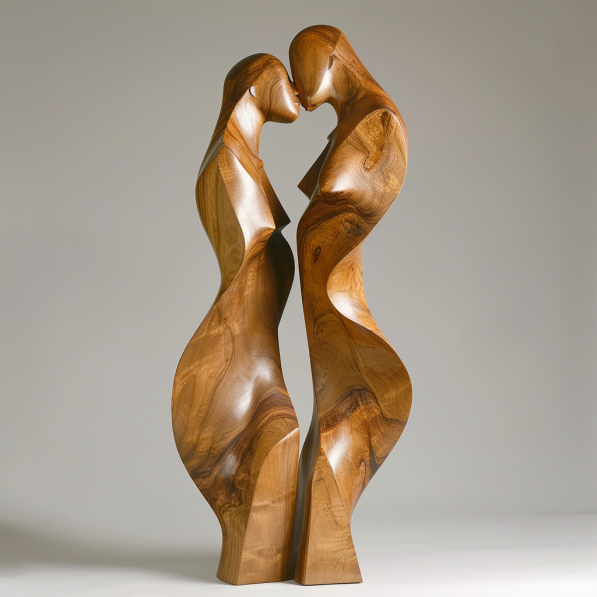Wood Sculptures in Public Spaces: Enhancing Community Aesthetics
Wood sculptures in public spaces play a significant role in enhancing community aesthetics, offering a blend of natural beauty and artistic expression that enriches the environment. These sculptures serve as focal points, conversation starters, and symbols of cultural and historical significance. This article explores the impact of wood sculptures in public spaces and how they contribute to the aesthetic and social fabric of communities.
1. Creating Visual Interest
Wood sculptures add visual interest to public spaces, transforming ordinary areas into engaging and vibrant environments. Their organic forms and textures stand in stark contrast to the often rigid and monotonous urban landscape, providing a refreshing and dynamic visual element. Whether it’s a whimsical carving in a park or a monumental piece in a city square, wood sculptures capture attention and invite closer inspection, encouraging passersby to pause and appreciate the artistry.
2. Reflecting Cultural Heritage
Public wood sculptures often reflect the cultural heritage and values of a community. Artists draw inspiration from local history, folklore, and traditions to create works that resonate with residents and visitors alike. These sculptures can commemorate historical events, honor influential figures, or depict scenes from local legends, serving as tangible reminders of a community’s identity and shared experiences. By celebrating cultural heritage, wood sculptures foster a sense of pride and belonging among community members.
3. Enhancing Natural Environments
Wood sculptures are particularly effective in enhancing natural environments such as parks, gardens, and nature reserves. Their organic material harmonizes with the surrounding flora, creating a seamless integration between art and nature. Sculptures placed along trails, near water features, or within wooded areas can heighten the sensory experience of being in nature, encouraging people to explore and connect with their environment in new and meaningful ways.
4. Promoting Environmental Awareness
Many public wood sculptures highlight themes of environmental conservation and sustainability. Artists often use reclaimed or sustainably sourced wood to create their works, emphasizing the importance of responsible resource management. Sculptures depicting wildlife, natural landscapes, or environmental issues can raise awareness and inspire action among viewers. By addressing ecological themes, wood sculptures educate the public and promote a greater appreciation for the natural world.
5. Fostering Community Interaction
Public art, including wood sculptures, plays a crucial role in fostering community interaction. These sculptures become gathering points where people can meet, socialize, and engage in dialogue. Community events, such as art walks, festivals, and workshops, often center around public sculptures, creating opportunities for people to connect and collaborate. Interactive sculptures, which invite touch or participation, further enhance the communal experience, making art accessible and engaging for all ages.
6. Supporting Local Artists
Installing wood sculptures in public spaces provides a platform for local artists to showcase their work and gain recognition. This support not only boosts the artists’ careers but also enriches the cultural landscape of the community. By commissioning local sculptors, municipalities and organizations invest in their creative talent, fostering a thriving arts scene that benefits the entire community. This collaboration between artists and the public sector can lead to more innovative and site-specific works that reflect the unique character of the area.
7. Enhancing Economic Vitality
Public art installations, including wood sculptures, can enhance the economic vitality of a community. Attractive public spaces draw tourists, boost foot traffic, and encourage spending at nearby businesses. Art installations can also increase property values and contribute to the overall appeal of a neighborhood. By investing in public art, communities create welcoming and vibrant environments that attract visitors and residents alike, stimulating economic growth and development.
8. Providing Educational Opportunities
Wood sculptures in public spaces offer educational opportunities for people of all ages. Schools and community groups can use these sculptures as tools for learning about art, history, and the environment. Artists can conduct workshops and guided tours, sharing their creative processes and the stories behind their works. These educational programs foster a deeper understanding and appreciation of public art, inspiring future generations of artists and art enthusiasts.
Wood sculptures in public spaces play a vital role in enhancing community aesthetics and enriching the social and cultural fabric of the areas they inhabit. By creating visual interest, reflecting cultural heritage, enhancing natural environments, promoting environmental awareness, fostering community interaction, supporting local artists, enhancing economic vitality, and providing educational opportunities, these sculptures contribute to the overall well-being and vibrancy of communities. As public art continues to evolve, wood sculptures will remain an essential and cherished component of our shared spaces, celebrating the beauty and creativity that connect us all.






